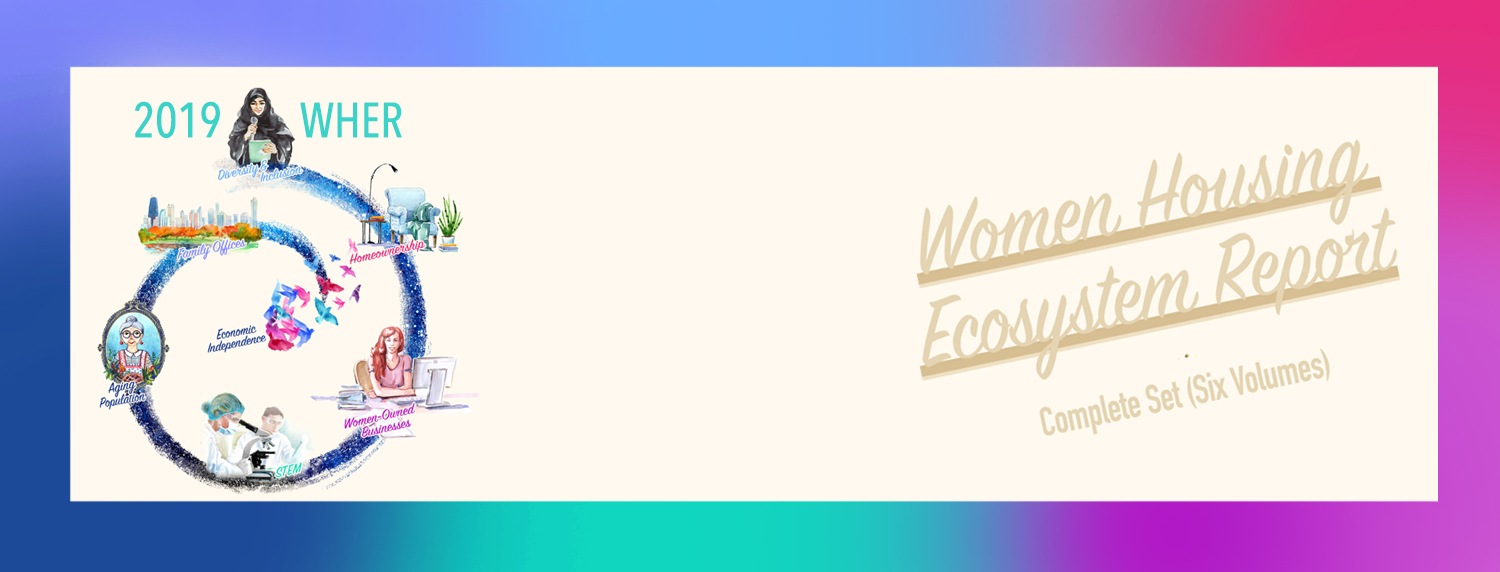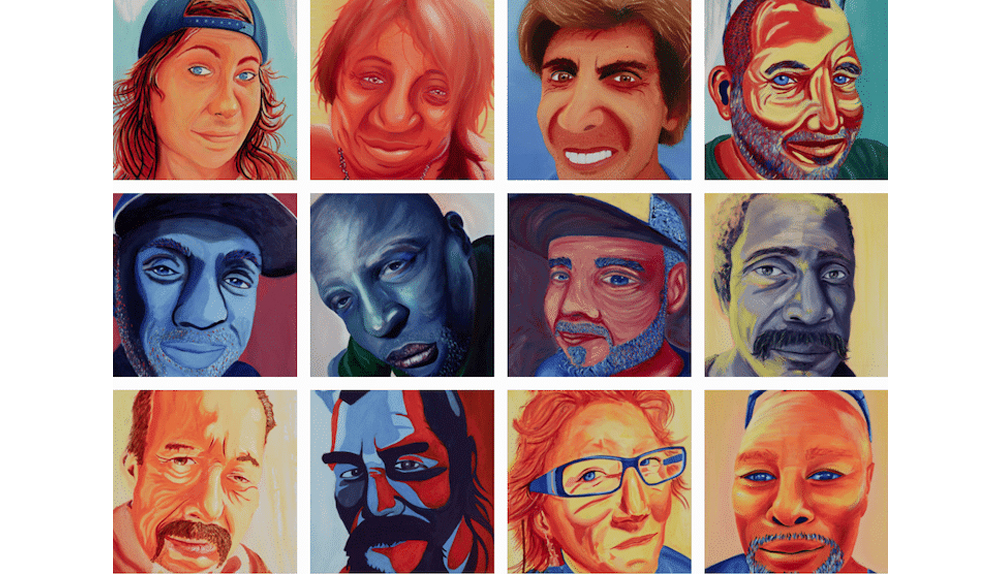The U.S. Census Bureau just released new data from the Small Area Income and Poverty Estimates (SAIPE) program, providing the only up-to-date, single-year income and poverty statistics for the nation’s 3,141 counties and 13,197 school districts. Among other key findings for 2018, the report reveals that 13.6 percent of counties had a statistically significant increase in median household income from 2007, while 5.5 percent had a decrease.

Know an Incredible Woman Preserving the
Quality of Life During COVID-19?
Submit your story today!
Read More

Consulting & Branding Opportunities
Grant your business access to insider,
proven knowledge to improve the quality of your procured
services and maximize business performance.

If you need D&I
Contact Us!
A Team Focused on Bring Diversity and Inclusion to Every Level
Learn More

#1 Top Real Estate Influencer
Desiree Patno
Diversity & Inclusion, Quality of Life, Know the Rules of the Game ®
Your Next Event
Grow Your Business
NAWRB: An SBA Resource
NAWRB is listed as a women-owned business resource for the SBA.
Check It Out
NAWRB Aging Population
Help Protect Elders
from Financial Abuse
Over $36.5 billion a year is lost annually in the U.S.
Prevent Financial Abuse

Women's Homeownership:
Dream. Stability. Sanctuary.
Life often presents us
with unplanned disruptions.

AI Technology
with
a Human Touch
Is
The Perfect Balance


NAWRB Women's Global Resource Center
A women’s depository for vendors & clients to grow their diverse spend & increase women’s employment at all levels within the housing ecosystem.

Tag Archives: poverty
WHER Chat: Happy Hispanic Heritage Month!
From September 15th to October 15th, National Hispanic Heritage Month celebrates the histories, stories, cultures and contributions of American citizens whose ancestors came from Mexico, Central and South America, Spain and the Caribbean. The observance began in September 1968 as Hispanic Heritage Week and was expanded into a month in 1989.
WHER Chat: Majority of States with Highest Poverty Rates are in the South
The U.S. Census Bureau’s 2018 American Community Survey one-year estimates reveal that the national poverty rate was 11.8 percent in 2018, a decrease from 12.3 percent in 2017. Fourteen states had a poverty decline, while Connecticut was the only state to have an increase during the same time period. Seven states had poverty rates lower than 10 percent in 2018, but other states have the highest poverty rates up to 19.7 percent. Read more for a list of the states with the highest poverty rates.
WHER Chat: Lowest Poverty Rate for Female-Householder Families
According to a new U.S. Census Bureau report, the official poverty rate decreased 0.5 percentage points from 12.3 percent to 11.8 percent between 2017 and 2018. A large proportion of this decline is attributed to a drop in the poverty rate of female-householder families with no spouse present, which dropped by 1.7 percentage points to 26.8 percent. The poverty rate for this group is at the lowest on record. The previous low poverty rate for these families was 28.5 percent in both 2000 and 2017.
Veterans Three Times More Likely to Be Homeless
According to a recent report by the U.S. Department of Housing and Urban Development (HUD), veterans comprise a little under nine percent of all homeless adults in the U.S., and 37,878 of veterans were experiencing homelessness on a single night in January 2018. Of these, 62 percent were staying in sheltered locations while 38 percent were staying in locations unsuitable for human habitation.
Approximately 18 out of every 10,000 veterans in the United States experienced homelessness on a single night in 2018. Veterans who are in poverty or are minority veterans are three times more likely to become homeless than the general population, according to a Zulu Time report titled “A Window into the Problems Military Veterans Face” by NDILC member Erica Courtney, President of 2020vet and Zulu Time, U.S. Army Aviation, Major NATO Gender Advisor.
U.S. Census Bureau Releases Income and Poverty Estimates for States & Counties
The U.S. Census Bureau has recently released their findings on income and poverty estimates for the nation’s states, counties and school districts in the new Small Area Income and Poverty Estimates (SAIPE) report. Key findings for the year 2017 are that 11.3 percent of counties had a statistically significant increase in median household income compared to 2007, while 7.5 percent had a decreased in that same time period.
5 Nonprofits Tackling Poverty and Other Women’s Issues
From neighborhood associations that meet a few times a year to large foundations with millions in assets, there are numerous nonprofit organizations in the United States that are working tirelessly to help others and address important societal issues.
According to the National Center for Charitable Statistics, there are 1.5 million tax-exempt organizations include public charities, private foundations, as well as chambers of commerce, fraternal organizations and civic leagues. Nonprofits make up over 10 percent of all private sector employment in the country, account for more than 11.4 million employees according to the Bureau of Labor Statistics.
These 5 States Had 4 Years of Consecutive Poverty Decline
California, Florida, Georgia, Michigan and North Carolina: For the fourth consecutive year between 2012 and 2017, these five states had a decline in poverty rates according to the 2017 American Community Survey (ACS) conducted by the United States Census Bureau. The ACS is an ongoing survey that generates vital data including information helping to determine how more than $675 billion in federal and state funds are distributed.
LA Family Housing is One of Dateline’s “Angels of Skid Row”
Of the half a million people across America homeless at any given time, a quarter reside in California, with 55,000 in Los Angeles alone. Los Angeles’ Skid Row, 52 square blocks of blight, has the highest concentration of homeless in America.
Skid Row came about under unofficial policy of containment, but now thousands of homeless are spilling out into other areas in LA creating an even greater crisis.
Unspoken Issues Impacting Women: Poverty, Health, Sexual Exploitation and Self-Confidence
From its title alone, you can tell this panel was a little different from the others. Wide-ranging in scope, yet narrow in its focus on issues that derail women from advancing in life, the conversations held on stage focused on topics people are sometimes uncomfortable talking about including sexual exploitation and poverty.

 Login
Login










